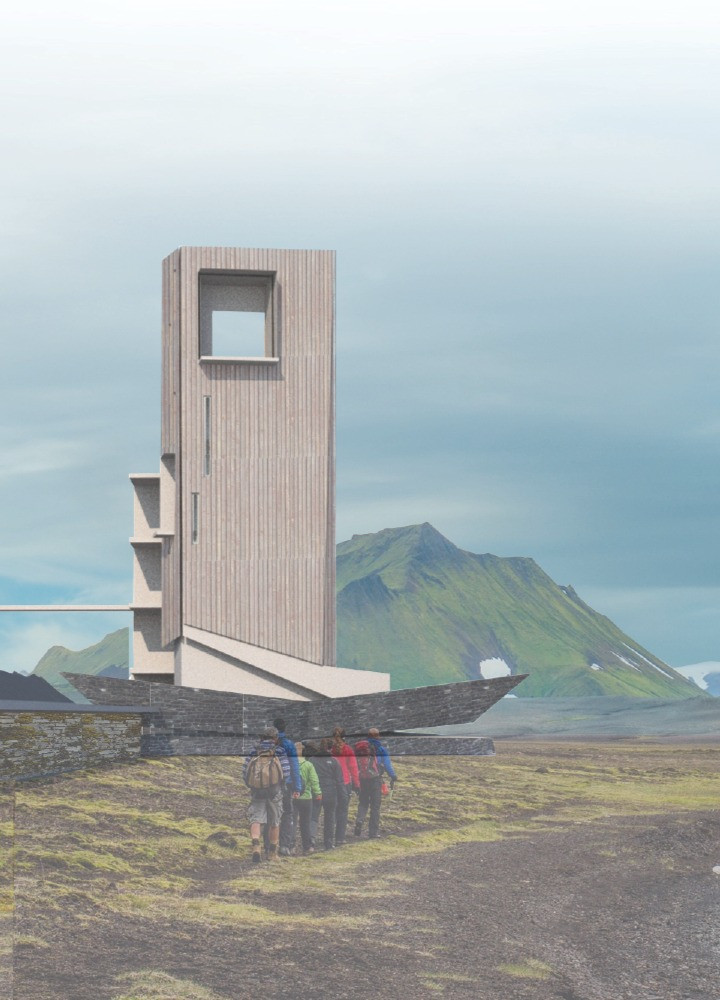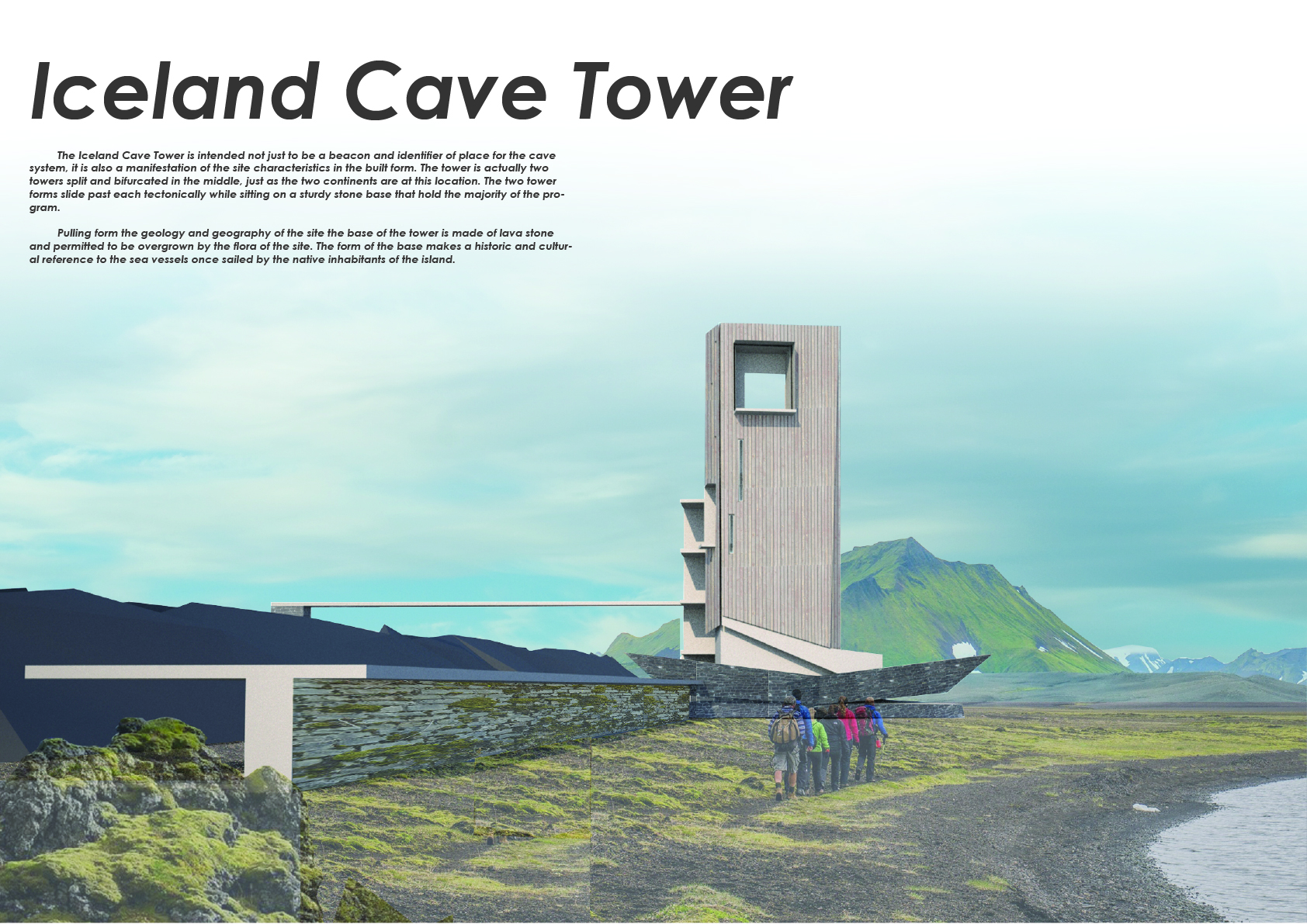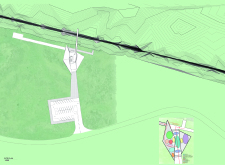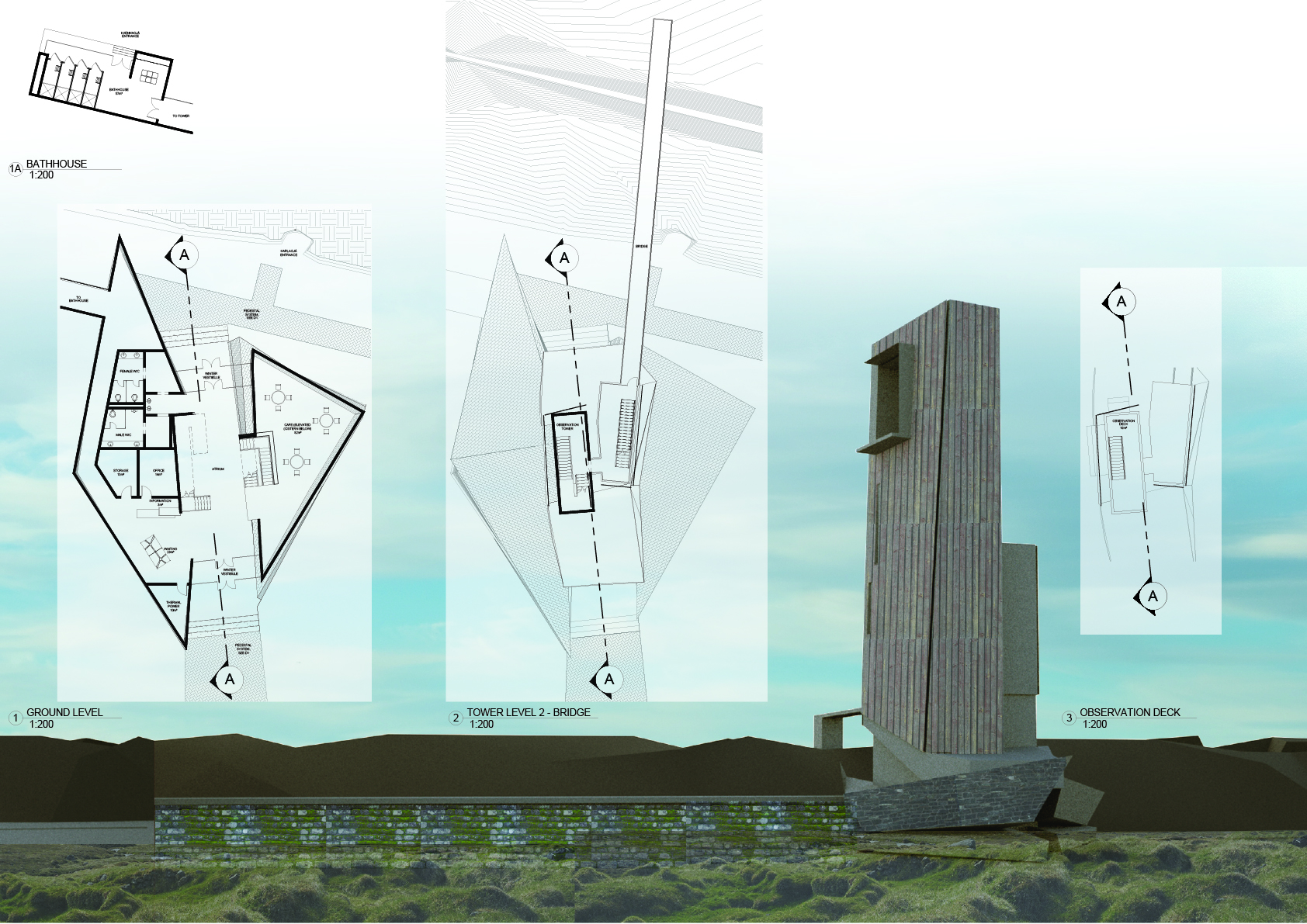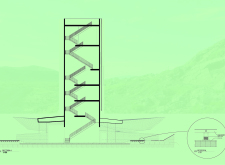5 key facts about this project
The Iceland Cave Tower stands out in the unique geological landscape of Iceland. It is designed not just to mark an important place for the surrounding cave system, but also to reflect the natural characteristics of the site. The building consists of two separate towers, which symbolize the division of tectonic plates. This thoughtful design integrates functionality with a connection to the environment.
Geological Context
The two tower forms interact with each other, representing the tectonic shifts typical of the area. This approach highlights a sense of movement, encouraging visitors to connect with the geological story of the site. A solid stone base supports the towers, ensuring stability while providing a foundation for the various functions housed within.
Materiality and Integration
Lava stone forms the base, creating a direct link to the local geography. This choice allows the base to harmonize with the surrounding flora, which can grow over it, enhancing the structure's connection to nature. This design strategy respects the environment and emphasizes sustainability as a core principle.
Cultural Significance
The base’s shape also pays tribute to Iceland's maritime heritage, reflecting the boats once used by the island's early inhabitants. This cultural connection deepens the overall meaning of the structure, linking modern architecture to the region's history while adding a sense of identity.
Functional Design
The layout of the spaces inside the Iceland Cave Tower is carefully considered to support movement and accessibility. Each area is arranged to ensure that visitors can navigate through the building efficiently. This focus on organization improves the experience for those exploring the tower, allowing them to appreciate its distinct features.
The design concludes with a visual connection between the natural and constructed worlds. The towers rise above the landscape, capturing the resilience of both nature and architecture, while inviting visitors to engage with the environment.


